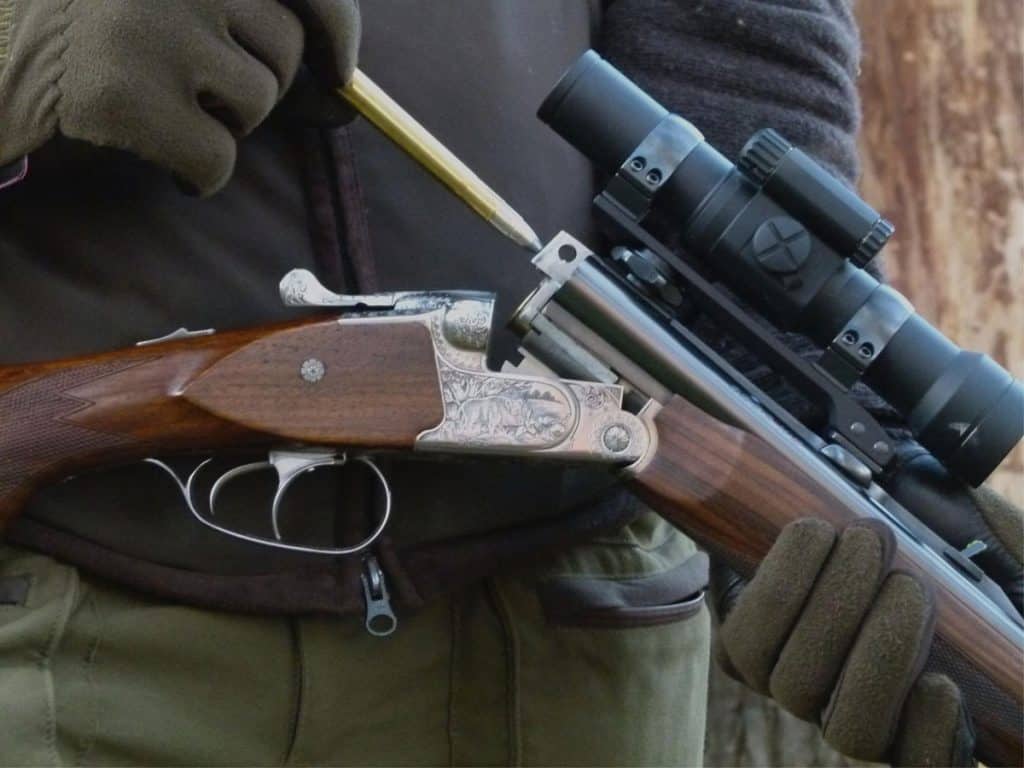It’s always fun when you come across those cool old rifles that have never been set up for a scope. Many people love to have them and shoot them, then want to fit a nice scope onto them. The very best way to do this is to take it to a gunsmith to ensure it’s done right, and your rifle doesn’t wind up looking like Swiss cheese.
This is generally a fairly inexpensive process, but can still run up to around $75 per hole drilled. If you’re like me, you might be a bit shy on cash this month. There are ways to do it yourself, saving some money, possibly time, and gaining a glowing sense of accomplishment. Follow this guide to learn how to drill and tap a rifle for scope mounts.
items needed for this tutorial
The Rifle In Question – Without question, you will need the rifle. It will have to be disassembled. The part you need is the receiver, possibly the barrel too depending on which type of scope mount you’re going for.
Scope Base Mount – The mount of your choice to be installed on this gun.
Some Kind Of Jig Or Guide – This is something you definitely don’t want to free-hand, and a jig comes in very handy. Wheeler Engineering makes a cool little drill and tap fixture that holds the receiver nicely and in proper alignment for right around $50-$60. Other types of jigs work well too, just depending on the type of mount and number of holes you need.
Vise – You must be able to hold your receiver and jig absolutely steady. There is no better way than a good vise.
Drill – Ideally, this will be a drill press. They work much faster and smoother, but not everyone has access to a press. In this case, you can use a hand drill. Just be aware that you will need to take your time and be very precise. Not all receivers are easy to drill through either, some are quite hard.
Cutting Oil – Makes the drilling much smoother.
Proper Drill Bit And Tap Bushing – You will need the correct size drill bit and tap bushing. These also need to be hard enough for drilling through steel.
How To Drill And Tap A Rifle For Scope Mounts
The easiest way to do this yourself is if you have some kind of access to a drill press. However, for the sake of this guide, we are going to assume that you do not. In this case, we will be using a hand drill. We are also going to assume that the only part you will be mounting is the receiver, not the barrel as well. If this were the case, both pieces would have to be perfectly aligned. Most commonly, you would only need the receiver.
Step 1 – Disassemble The Rifle
First thing is you need to disassemble your rifle down to the receiver. This is the only piece you will be drilling, so it’s best to get the rest of the rifle out of the way.
Step 2 – Secure The Receiver
Secure your receiver in the chosen jig. This should align the holes exactly where they need to be on the receiver. Double check your mount against this to be sure the holes will be in the proper place. Then secure your receiver and jig in a vise. Make sure it’s good and tight, you want zero play. It must be absolutely solid.
Step 3 – Select Proper Bit And Tap
Make sure you have the proper sized bit and tap that will stand up to this job. If you special ordered one, you shouldn’t have a problem. If you are selecting out of your collection, it may help to have a size gauge. Some of the jigs have guide bushings, which would also be helpful.
Step 4 – Oil And Drill
Place a dab of oil into the holes and drill away. This is where you would want to have some guides or bushings to fit into the holes for your drill bit. It makes for a straighter drill hole.
Step 5 – Tap
Use your tap bushing to tap out the hole. Use some more oil, go slowly and back up every quarter to half turn so that you don’t break off your tap. Make sure you have no burs on your finished product.
Step 6 – Mount
Congrats! Now you can mount your base mount, put your rifle back together and then mount your scope.
Common Questions
What is a safe drilling depth for your screw? – There is a formula to follow to be sure you are not compromising your gun with screws and holes everywhere. It’s OD (outer diameter) – ID (inner diameter)/2=barrel wall thickness. Your max drill depth is wall thickness – safe depth. Safe depths are as follows:
(screw size) #6 -> (over chamber) .075 -> (elsewhere) .050
(screw size) #8 -> (over chamber) .100 -> (elsewhere) .075
(screw size) #10 -> (over chamber) .125 -> (elsewhere) .100
Why would a drill press be preferred over a hand drill? – There are several reasons for this. A drill press is very precise and comes straight down, so there’s no movement on the drill’s part. It requires less physical exertion to move down the press, and because it is only controlled by lowering the lever, you can watch and control easier how far the depth is made.
Conclusion
Hopefully, this guide on how to drill and tap a rifle for scope mounts has been helpful to you and can point you in the right direction. Again, the best option would be to have a gunsmith do it, but it’s totally doable yourself. The second best option is to have that drill press or know someone who does. A successful scope mounted and a test shoot will indicate how you did with drilling and tapping your rifle.
If you enjoyed this article you’ll probably like these:



